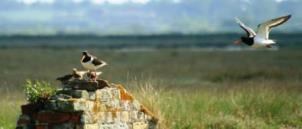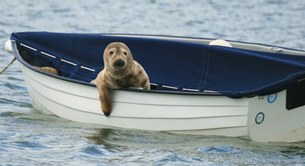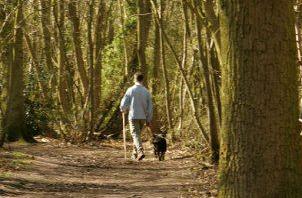The Tendring District has a diverse range of dynamic natural environment which benefit from national and in some cases international conservation designations. The areas, nature reserves and bird sanctuaries provide excellent opportunities for bird watchers and wildlife enthusiasts, these areas are listed below along with places of interest. You may also like to visit our Conservation page which gives details of how we are helping to preserve the district's natural environment. Why not also visit our Walks in Tendring and our Cycle Tendring pages for further information on exploring our countryside in Tendring.
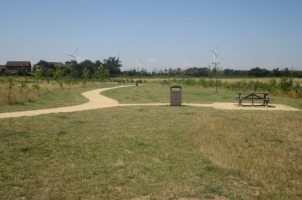 Cranleigh Close, Clacton on Sea
Cranleigh Close, Clacton on Sea
Cranleigh Close Open Space is a 2.2 acre site off Constable Avenue, Clacton, providing quiet countryside recreation for the public and contributes to the bio-diversity of the area. It is enclosed by a hedged perimeter and has an all-weather access pathway, picnic tables and litter bins. In 2011 pupils from Cann Hall Primary School helped to plant two hundred trees at the site consisting of hawthorn, field maple, mountain ash, birch and hazel. A 'living shelter' has also been created from 20 pleached field maples with the branches and crown trained to grow flat. The site is home to a wooden animal sculpture and a feature badger bench for children and visitors to enjoy.
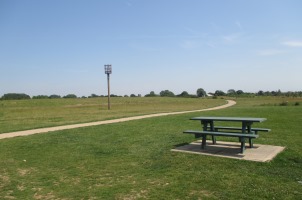 Brook Country Park, Clacton on Sea
Brook Country Park, Clacton on Sea
Brook Country Park is located between the A133 and London Road Roundabout, Clacton. The park consists of rough grassland with scattered blocks of young trees. The park provides informal, quiet countryside recreation for the public and contributes towards the bio-diversity of the area.
There are a network of grass paths throughout the park and an all-weather access path for less mobile visitors, which can be accessed via the main entrance car park in Britton Way. Picnic tables and benches are located across the park. Visit our Brook Country Park page for more information.
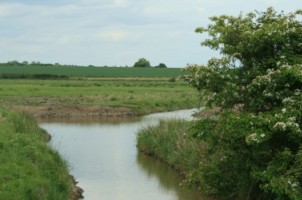 Holland Haven Country Park, Holland on Sea
Holland Haven Country Park, Holland on Sea
The country park is situated on the coast between Clacton and Frinton and is managed to conserve the landscape, coastal grazing marsh and wildlife quality of the area whilst providing for the quiet enjoyment of visitors. In addition to some interesting breeding birds in summer, the country park is an important point for Spring and Autumn migrants. The SSSI designation recognises the rare and varied flora.
Over 100 acres of unspoilt scenic coastline - ideal for bird watching. Open all year, bird watching hides, picnic facilities, pay and display car parking.
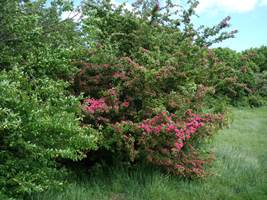 Pickers Ditch Meadows, Great Clacton
Pickers Ditch Meadows, Great Clacton
This area includes a section of the Pickers Ditch tributary and was declared a Local Nature Reserve in 1992. The reserve represents a valuable green space in the Great Clacton area. Hedge planting along the border helps screen the site, whilst tree planting in the adjacent area provides a copse area surrounding the existing footpath.
Wrabness Local Nature Reserve, Wrabness (Essex Wildlife Trust)
The reserve is located on the southern bank of the River Stour between Manningtree and Harwich, and is a mixture of unimproved grassland, wooded areas and marshland with extensive intertidal mudflats and saltmarsh. A network of paths and specially designed ramps makes for easy access for the disabled visitor.
You can enjoy both Coppice woodland and watching waders on the estuary. In the spring, nightingales can be heard. Free car parking.
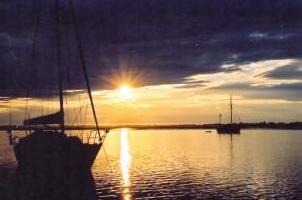 The Naze, Walton on the Naze
The Naze, Walton on the Naze
The Naze headland stretches northwards from the town of Walton on the Naze protecting Hamford Water from the North Sea. The 40m high cliffs rising to the south are unique on the Essex coastline. The Naze constantly produces a range of fossil remains of animal life. The Red Crag produces shells of c. 2 million years and the London Clay holds 50 million year old sharks teeth.
Nationally important bird migration site and nesting area for several protected species. Access all year round. Toilets and café. Pay and display parking.
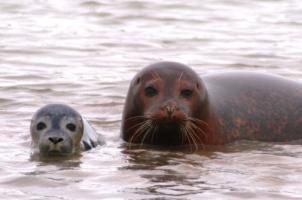 Hamford Water, Walton on the Naze
Hamford Water, Walton on the Naze
Hamford Water and the Walton Backwaters is an area of over 2000 hectares comprising tidal inlets, islands and saltings representing substantial areas of the Tendring coastline. Part of this is a National Nature Reserve due to its outstanding wildlife interest which has led to a number of international designations. The area also supports a small population of grey and common seals. John Weston Reserve, (Essex Wildlife Trust), Walton This nature reserve consists of habitats which are threatened with extinction in Essex. Its nesting birds include Lapwing, Redshank, Sedge and Reed Warblers. It is also an important stopping off point for migrants, for example the Firecrest.
Bobbit's Hole, Harwich
This small freshwater lake bounded by secondary woodland is a valuable wildlife pocket within the urban surroundings of Harwich. The reserve attracts a number of bird species including the Kingfisher and is managed by the Natural History Group of the Harwich Society.
Pedlars Wood, Frinton/Walton
Situated on the road between Frinton and Walton the wood is separated into two areas either side of Central Avenue. The Frinton side is a woodland walk open to the public, the Walton side has an educational nature trail which is accessible by appointment only.
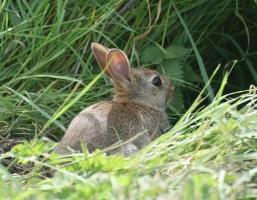 Great Holland Pits (Essex Wildlife Trust)
Great Holland Pits (Essex Wildlife Trust)
This area boasts a range of habitats, both old and new. The recolonised gravel works shows remnants of old woodland together with areas of heathy grassland and freshwater pools. The newly acquired water meadows alongside the meanders of Holland Brook provide a rich variety of species including Kingfishers and dragonflies. Adjacent is the 6 acre Twig woodland.
Howlands Marsh (Essex Wildlife Trust), St Osyth
This area of coastal grazing marsh to the west of St Osyth Priory is dissected by reed and sedge filled dykes and fleets and is bordered by a fringe of saltmarsh outside of the seawall. The two observation hides offer views of the waders and wildfowl on the reserve and adjacent Flag Creek.
Stour Wood, Copperas Bay and Copperas Wood (RSPB Woodland Trust), Wrabness
Stour Wood and Copperas Wood are both extensive areas of sweet chestnut coppice, intermixed with hornbeam and other tree species indicating an ancient woodland area. Visitors in mid-summer may see the White Admiral butterfly in the only area in Essex where this species is known to occur. Copperas Bay in winter offers the spectacle of masses of wading birds and wildfowl visiting the Stour Estuary. The 81 mile Essex Way passes along the edge of part of Copperas Bay.
Soken Wood (Tendring Millennium Wood) Malting Lane, Lower Kirby
In order to celebrate the Millennium Tendring District Council in partnership with the Woodland Trust purchased ten acres of arable land at Lower Kirby. The site was planted with a wide range of native broad leaf trees and formed part of the National 'Woods on your doorstep' campaign. In all 8000 trees have been planted on site. Of special interest are the 'prehistoric trees' planted in an arboretum area. These include Dawn Redwood, Tulip tree, Monkey puzzle and Ginko. The wood enjoys spectacular views over Hamford Water NNR. Easy access via Maltings Lane - free car parking - open all year.
Weeley Hall Wood (Essex Wildlife Trust)
One of the finest surviving woods within Tendring. Covering an area of 32 hectares the wood comprises of oak with sweet chestnut coppice, Horn beam and areas of conifer. Specially noted for its diverse flora and spectacular Bluebell display in Spring. Parking by Weeley church.
Springmead Garden - Brightlingsea
Previously overgrown and neglected this one acre garden is being carefully restored by volunteers and local craftsmen with springs and streams providing a quiet and tranquil oasis.
Useful links and documents
Fishing in the Tendring District



